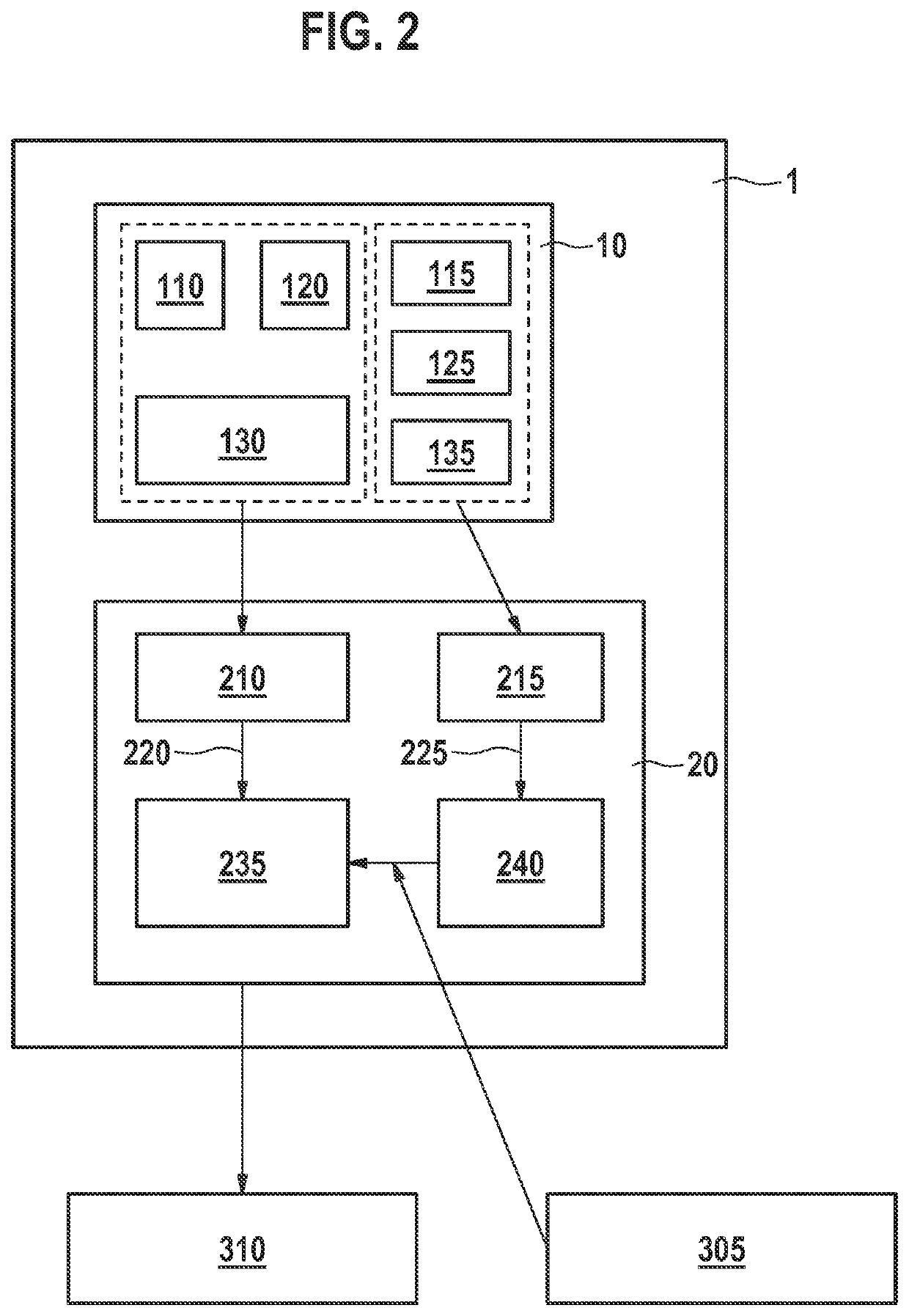Micromechanical inertial sensor
a micromechanical and sensor technology, applied in the direction of acceleration measurement in multiple dimensions, acceleration measurement using interia forces, instruments, etc., to achieve the effects of high mechanical vibration, reliable recognition of signal errors, and increased safety of the overall system
- Summary
- Abstract
- Description
- Claims
- Application Information
AI Technical Summary
Benefits of technology
Problems solved by technology
Method used
Image
Examples
Embodiment Construction
[0019]FIG. 1 schematically shows a low-g acceleration sensor in the related art. An inertial sensor 1 is illustrated, here a three-channel low-g acceleration sensor including a MEMS chip 10 and an ASIC 20. First capacitive sensor elements 110, 120, 130 for low-g acceleration measurement in the spatial directions x, y, z are integrated on the MEMS chip. A first capacitance-to-voltage converter (C / V converter) 210 for generating a voltage corresponding to the present acceleration per channel is integrated on ASIC 20, which supplies a first measuring signal 220. Furthermore, a first signal processor 230 for signal processing is integrated, which is configured to output a low-g acceleration signal 300.
[0020]These sensors typically have bandwidths of 50 Hz to 400 Hz. The bandwidth is reduced by the ASIC to the desired degree to keep the noise of the sensor as low as possible. The typical bandwidth of the MEMS sensor element is 3 kHz to 5 kHz. In a range of 400 Hz to several kHz, it is th...
PUM
 Login to View More
Login to View More Abstract
Description
Claims
Application Information
 Login to View More
Login to View More - R&D
- Intellectual Property
- Life Sciences
- Materials
- Tech Scout
- Unparalleled Data Quality
- Higher Quality Content
- 60% Fewer Hallucinations
Browse by: Latest US Patents, China's latest patents, Technical Efficacy Thesaurus, Application Domain, Technology Topic, Popular Technical Reports.
© 2025 PatSnap. All rights reserved.Legal|Privacy policy|Modern Slavery Act Transparency Statement|Sitemap|About US| Contact US: help@patsnap.com


